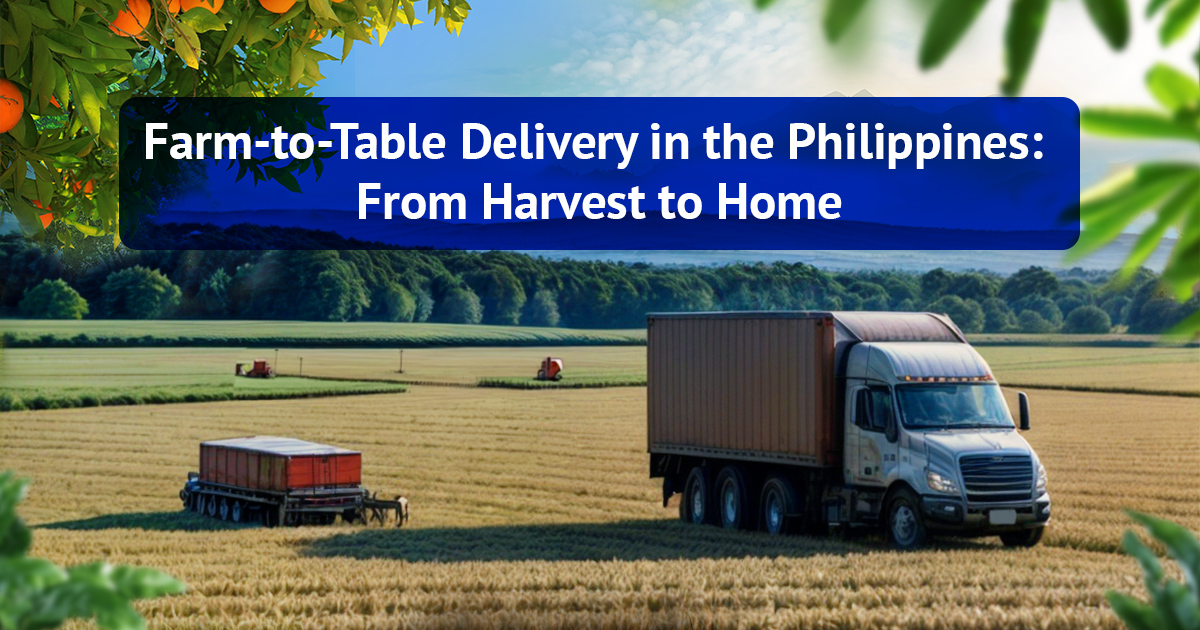
The farm to table delivery is becoming very popular in the Philippines. You might wonder why? This is because more and more people want to eat fresh, locally-grown food. It connects farmers directly with consumers or you can just simply say, harvest to home.
A report from Statista, the growing farm to table delivery makes a lot of sense in the Philippines. Many Filipinos are involved in occupations that utilize natural resources. This connection to the land translates to a wide availability of products grown, raised, or harvested locally. With this supply from people already engaged in these activities, the farm to table trend of getting food directly from local producers has great potential in the Philippines.
What is the Current Status of Agriculture in the Philippines?
Because of the Philippines’ landscape and tropical climate, farming and fishing are the biggest agricultural sub-sectors in the country. The top crops grown nationwide and exported are sugarcane, rice, coconuts, and onions. Recent trends in Philippine agricultural exports point towards a dominance of organic products, including oils, fruits, nuts, and various fats derived from plants and animals. In the livestock and poultry sector, pigs, cattle, and chickens continue to be the most prevalent.
Benefits of Farm To Table Delivery
Contributes to Local Economy
Farm to table delivery has been a real boost for local economies. When consumers buy directly from local farms, it helps support the agricultural sector and creates jobs in their own communities. This direct harvest to home model enables producers to capture a larger portion of the earnings, as there are no intermediary parties involved. This promotes a more equitable economic system overall.
This local food movement connects producers directly with consumers, bypassing traditional channels. This approach benefits rural communities by empowering farmers and keeping more profits within their regions. It strengthens agricultural livelihoods, fosters job creation, and promotes economic growth in farming areas across the Philippines.
Enhancing Product Freshness and Quality
One of the main benefits of the farm to table delivery is the unbeatable freshness and quality it provides. Locally sourced ingredients often arrive at their destination with peak freshness. This swift journey from field to table preserves the inherent deliciousness and maximizes the inherent nutritional content. Compared to conventionally transported goods, this approach minimizes the time products spend in transit and storage, which can diminish flavor and degrade nutrients.
Resource Management and Eco-Practices
Using farm to table delivery service providers that have bigger trucks to accommodate bulk delivery like KargaX, eCarga, and Transportify, you substantially decreases the carbon footprint involved in transporting food. Because the deliveries are close by, the food travels a shorter distance. This reduces the amount of fuel used and minimizes the environmental impact from transport.
Additionally, this approach often promotes farming methods that are gentler on the environment. These methods typically rely less on artificial additives like fertilizers and pesticides. This is better for the environment overall.
Building Community and Trust
From farm to table, the connection between growers and eaters fosters a strong sense of community and transparency. Folks can directly discover the story behind their food, where it’s raised, and the faces behind its growth. This transparency increases consumer confidence and loyalty towards local agricultural brands and products.
Keys for Harvest to Home Success
Start with Local Initiatives
Several local programs in the Philippines have successfully implemented farm to table concepts. Local food initiatives, like programs that connect consumers directly with a network of nearby farms, are becoming increasingly popular.
Advances in Technology
By utilizing technology like smartphone apps with logistics providers geared towards farm-to-table delivery, the process becomes more seamless. Mobile apps like Transportify provide platforms where farmers can directly list and sell their produce to consumers. Farmers can easily advertise and sell their fresh crops, meats, dairy and other products through the app. Consumers can conveniently browse what local items are available and place orders.
Future Outlook and Expansion
Looking ahead, the harvest to home model has great potential to expand beyond just local markets to regional levels, given improved logistics and technological capabilities. By developing more robust distribution networks and supply chains, the reach of farm to table initiatives could grow significantly. This would allow for incorporating a more diverse array of agricultural products from various areas and catering to a wider consumer audience across regions.
SEE ALSO:
